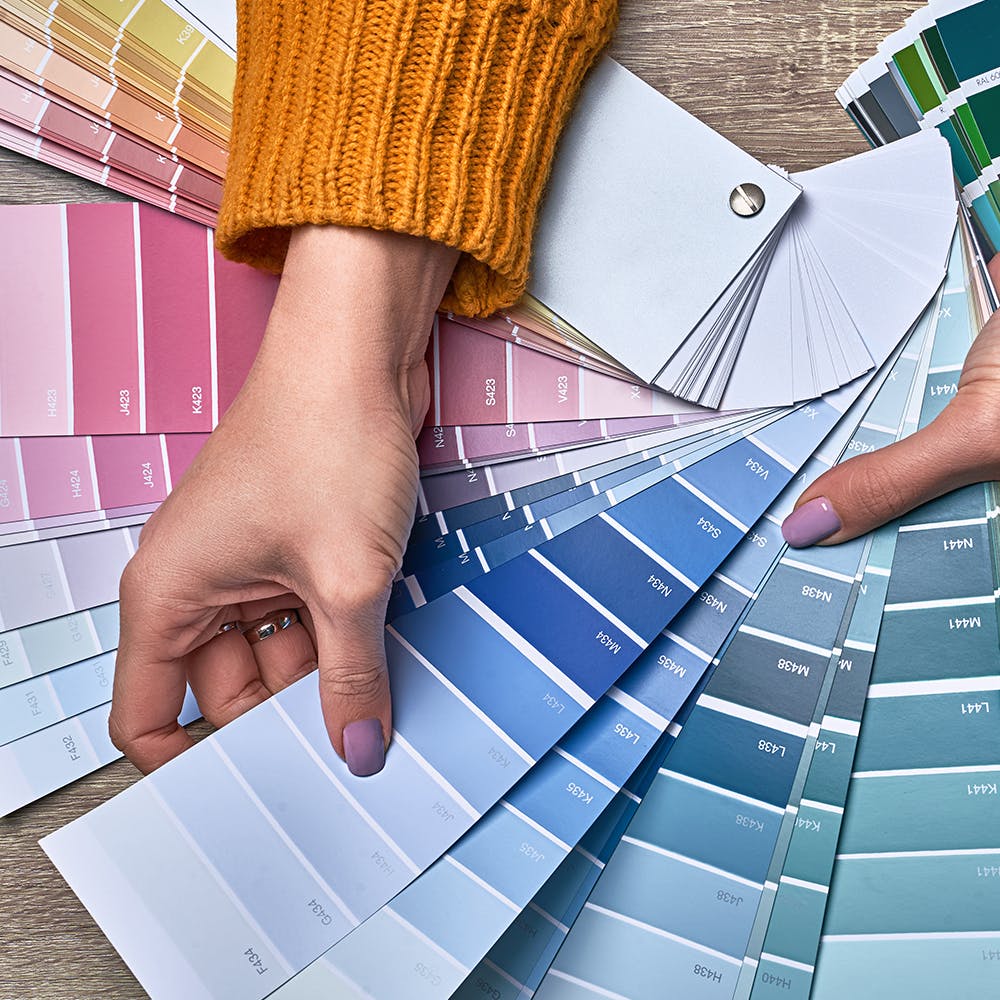As someone who is always appreciative of stylish and visually captivating homes, I understand the transformative power of colours in interior design. They can evoke emotions, set moods, and create a harmonious atmosphere. And despite black being my happy colour, it does seem a bit unrealistic to have an all black home. Now with the need for colours in my life, it does get a bit daunting to figure out what colours go where, and what goes with what. That's why I reached out to Janavi Javeri, an interior stylist, and founder of Walls & Things to decode and help us understand the colour wheel theory and how to use it when it comes to home decor.
Colour Wheel Theory For Home Explained By An Expert
Choose A Harmonious Colour Scheme
Start by selecting colours that are adjacent or close to each other on the color wheel. This approach, known as an analogous colour scheme, creates a harmonious and cohesive look in your home. You can pair shades of blue, green, and teal for a serene and tranquil atmosphere.
Create A Contrast With Complementary Colours
Complementary colours are positioned opposite each other on the colour wheel. By using these colours in your decor, you can achieve a bold and eye-catching contrast. For instance, pair warm tones like orange and blue for a vibrant and energetic ambience in your space.
Experiment with Triadic Colour Schemes
Triadic colour schemes involve selecting three colours that are evenly spaced on the colour wheel. This approach allows for a balanced and visually appealing combination. Use shades of yellow, blue, and red to create a lively and dynamic atmosphere in a room.
Utilise Colour Psychology
Colours have the power to evoke certain emotions and moods. Consider the psychological impact of different colours when choosing hues for specific rooms. For instance, opt for soothing blues and greens in bedrooms to create a calming and relaxing environment, while vibrant yellows and oranges can bring energy and enthusiasm to living areas.
Play With Colour Accents
Inject pops of colour into your decor by using accent pieces and accessories. This could be through colourful throw pillows, artwork, or decorative objects. Accent colours add visual interest and can be used strategically to create focal points within a room. For example, a vibrant red vase can draw attention to a neutral-coluored shelf or table.
Explore Monochromatic Schemes
A monochromatic colour scheme involves using different shades, tints, and tones of a single colour. This approach creates a sophisticated and cohesive look. You can experiment with various shades of blue, such as navy, sky blue, and baby blue, to create depth and visual interest while maintaining a unified colour palette.
Use Neutrals As A Base
Neutrals, such as whites, grays, and beiges, act as a versatile base for your colour scheme. They provide a calming backdrop and allow other colours to shine. Consider incorporating neutral tones on walls, furniture, and larger elements in your space. This provides a foundation for layering bolder colours as accents, creating a balanced and visually appealing environment.

